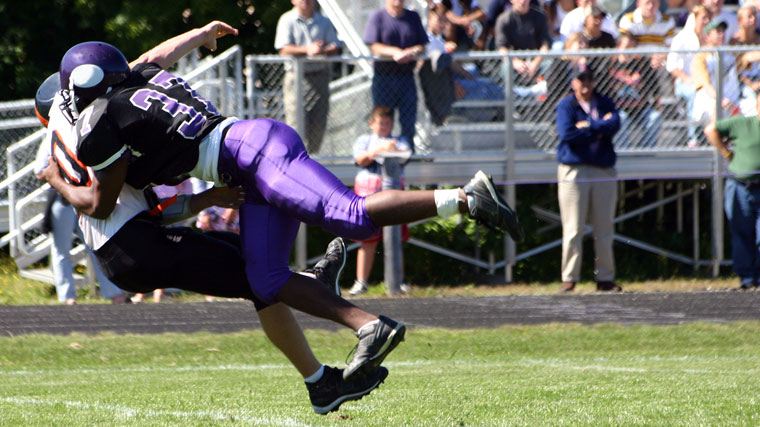What We Know About Chronic Traumatic Encephalopathy (CTE)

Find Your Perfect Match
Answer a few questions and we'll provide you with a list of primary care providers that best fit your needs.
Chronic traumatic encephalopathy (CTE) is a brain disease caused by trauma to the head. It has most recently been associated with professional football players. The brain damage builds up after repeated blows/concussions, and symptoms may not show up until many years later.
Over time, as the brain degenerates, it will start to shrink up and there will be extra material, called tau protein, laid down. The process chokes off blood vessels and brain cells so that over time the brain starts to shrivel up and deteriorate.
Although sometimes confused with Alzheimer’s disease or other forms of vascular dementia, research has shown CTE is specifically caused by head trauma.
Who Gets CTE?
We usually think of CTE in terms of contact collision sports such as football, hockey, or rugby. But it also occurs in the military where soldiers are exposed to blast injuries, falls, or other head trauma.
In 2017, researchers reported that of 111 donated brains of deceased NFL players, 110 had CTE.
What Are the Symptoms?
While the head injuries likely occur in the teen or young adult years, symptoms of CTE usually don’t show up until middle age. Symptoms can include:
- Memory loss
- Confusion
- Personality changes including depression and suicidal thoughts
- Erratic behavior including aggression
- Problems paying attention and organizing thoughts
- Difficulty with speech, balance and motor skills
Some of the symptoms mimic those of Parkinson’s disease, but the two diseases are very different.
Can CTE Be Treated?
CTE is only diagnosed by examining the brain after death. Some of the symptoms can be treated with medications like antidepressants, but this won’t cure CTE.
If you’re recovering from a concussion, it’s important that you diligently follow your doctor’s instructions. “After a concussion, you should refrain from any activity that has the potential for another head injury,” cautions Fadi Tayim, PhD, division chief of neuropsychology with the Clinical Neuroscience Institute. That’s because CTE develops after you have multiple concussions. “If you have another head injury when you’re still recovering from the initial injury, this can compound the effects of the brain injury and require a much longer recovery time,” he adds. “Each multiple, successive head injury can exponentially increase cognitive deficits and recovery time.”
Resting per your doctor’s advice is imperative following a concussion. Besides rest, Dr. Tayim recommends protective measures like wearing approved athletic gear, a motorcycle or bicycle helmet, and a seat belt to lower the risk of head trauma. Unfortunately, right now there is not any particular equipment that will completely help prevent concussion. There’s research being done on helmets and mouthpieces, but there’s not a lot of data that shows improvements in them will make a difference.”
Find Your Perfect Match
Answer a few questions and we'll provide you with a list of primary care providers that best fit your needs.
Source: Fadi Tayim, PhD, Division Chief of Neuropsychology, Clinical Neuroscience Institute; Alzheimer’s Association





